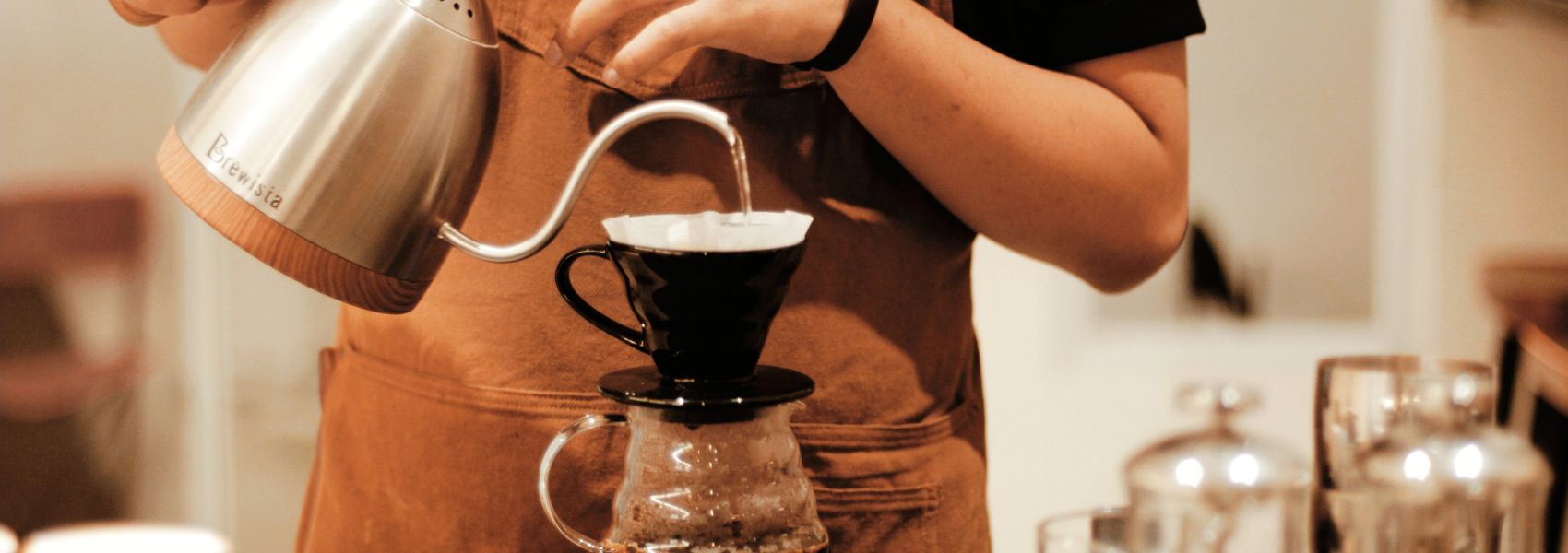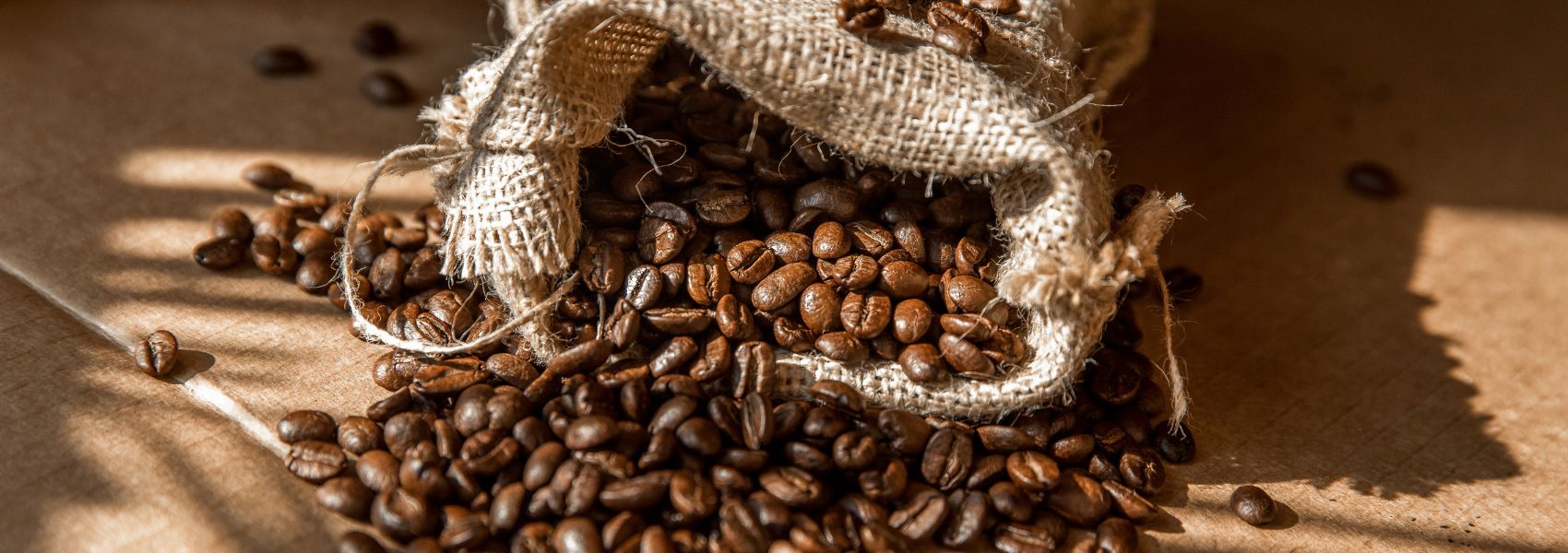The Best Water to Coffee Brewing Ratios
Introduction to the Art of Coffee Brewing
Every coffee enthusiast knows that making the perfect cup of coffee is both an art and a science. The allure of that first sip in the morning, or the comforting warmth in the afternoon, can set the tone for your day. For home baristas, the quest to craft that ideal cup is a fulfilling endeavor, one that requires understanding the delicate balance between water and coffee. This blog is dedicated to you, the coffee lover eager to elevate your brewing game. We'll explore the significance of water to coffee ratios and how you can master this to enhance your coffee experience with Door County Coffee. From brewing up our single pot coffee packs to a 5 pound bag of your favorite flavor - we have you covered!
Understanding Coffee Brewing Ratios
One of the most crucial aspects of brewing coffee is getting the ratio of water to coffee just right. A brewing ratio refers to the amount of water used for a specific amount of coffee grounds. This ratio can significantly affect the flavor, strength, and overall quality of your brew. If you use too much water, your coffee might be weak and lack flavor. On the other hand, too little water can result in a brew that's overly strong and potentially bitter.
Understanding and mastering these ratios is essential for every home barista. The standard ratio recommended by the Specialty Coffee Association (SCA) is 1:18, meaning one part coffee to 18 parts water. This is a good starting point, but personal preference plays a significant role. Some coffee enthusiasts prefer a stronger brew and might opt for a 1:15 ratio, while others who enjoy a milder cup might choose a 1:20 ratio. Experimenting within these guidelines can help you find your perfect cup.

The Role of Water Quality in Brewing
While finding the right ratio is important, the quality of water you use can make or break your coffee. After all, coffee is 98% water, so its quality directly influences the taste of your brew. Ideally, you want to use filtered water free from chlorine and other impurities. Too many minerals can lead to scaling on your equipment, while too few can result in a flat-tasting cup.
Water hardness, pH levels, and mineral content all contribute to the final flavor of your coffee. The SCA suggests using water with a mineral content of about 150 mg/L and a neutral pH of around 7. By paying attention to your water quality, you can ensure a cleaner and more vibrant coffee flavor, enhancing your overall brewing ritual.
Types of Coffee Brewing Methods
There are numerous brewing methods available, each offering its unique flavor profile and experience. Whether you prefer a classic drip coffee maker, the rich espresso, or the hands-on approach of a French press, understanding the specifics of each method can help tailor your water to coffee ratio to your liking. Let's explore some popular methods.
Drip Coffee Makers
Drip coffee makers are a staple in many households, valued for their convenience and consistency. When using a drip coffee maker, the typical ratio is around 1:17, but this can be adjusted based on your taste preferences. This method is great for those who enjoy a straightforward coffee experience, allowing the flavors of your beans to shine through. All of our beans are ground to an all-purpose grind at Door County Coffee so we
French Press
French presses offer a bold and full-bodied cup of coffee, thanks to their immersion brewing technique. A common starting ratio is 1:15, but many enthusiasts find a 1:12 ratio provides a richer experience. The beauty of the French press is its ability to retain the natural oils of the bean, creating a more robust and aromatic cup.
Espresso
Espresso is a concentrated form of coffee that uses a small amount of nearly boiling water forced through finely-ground coffee beans. The typical espresso ratio is 1:2, which might seem stark compared to other methods. However, this ratio is essential for achieving the intense, rich flavor that makes espresso so beloved.

Finding Your Perfect Brew
Experimenting with different brewing ratios and methods is key to discovering your perfect cup of coffee. Start with the standard ratios as a baseline and adjust based on your taste preferences. Don't be afraid to try new brewing techniques or tweak your ratios slightly. Coffee is a deeply personal experience, and your unique preference defines what makes the perfect cup.
Consider keeping a coffee journal to track your experiments. Note the ratio, method, and any adjustments you make. Over time, you'll gain a deeper understanding of what you enjoy, and this knowledge will empower you to consistently brew coffee that delights your senses.
The Importance of Consistent Measurements
Maintaining consistency in your brewing process is crucial for achieving reliable results. Consider investing in a digital kitchen scale to accurately measure your coffee and water. This ensures you adhere to your desired ratio and allows for easy tweaking in future brews.
Consistency extends beyond measurements. Pay attention to your grind size, water temperature, and brewing time. Each element plays a role in the final flavor of your coffee, and small variations can lead to noticeable differences in taste. By fine-tuning these aspects, you can elevate your coffee game and impress even the most discerning coffee aficionados.
The Science Behind Coffee Extraction
Understanding the science of coffee extraction can further enhance your brewing mastery. Extraction is the process of dissolving coffee compounds in water, and different compounds dissolve at different rates. The goal is to achieve a balanced extraction, where the desirable flavors are highlighted, and undesirable ones are minimized.
Under-extraction results in a sour and acidic cup, while over-extraction can lead to bitterness. The key to balanced extraction lies in finding the sweet spot between grind size, water temperature, and brewing time. A finer grind size increases surface area, leading to a faster extraction, while a coarser grind slows it down. Adjust these variables to achieve the flavor profile you desire.
Exploring Different Coffee Beans
Beyond ratios and methods, the type of coffee beans you choose significantly impacts your brew. Arabica and Robusta beans are the most common, each offering distinct flavor profiles. Arabica beans are known for their complex flavors and pleasant acidity, while Robusta beans provide a stronger, earthier taste.
Within these categories, there are countless varieties and regions of origin to explore. Ethiopian beans might offer fruity and floral notes, while Colombian beans bring a nutty and chocolatey flavor. Experimenting with different beans can be as exciting as trying new brewing techniques, allowing you to discover new dimensions in your coffee experience.

The Role of Freshness in Brewing
Freshness is paramount when it comes to coffee. Coffee beans begin to lose their flavor soon after roasting, so buying freshly roasted beans is crucial for the best taste. Look for local roasters or specialty coffee shops that offer freshly roasted beans, often with a roast date on the packaging.
Once you have your beans, store them in an airtight container away from light, heat, and moisture. This helps preserve their freshness and flavor for as long as possible. Grinding your beans just before brewing also ensures you're extracting the maximum flavor from each cup.
Overcoming Common Brewing Challenges
Even seasoned coffee enthusiasts encounter challenges in their brewing journeys. Perhaps your coffee tastes too bitter or lacks the expected depth. These issues can often be traced back to factors like grind size, water temperature, or brewing time.
If you find your coffee too bitter, consider coarsening your grind or reducing your brewing time. Conversely, if your coffee lacks flavor, try a finer grind or slightly longer brewing time. Don't hesitate to troubleshoot and adjust until you achieve the desired results.
Building a Community of Coffee Lovers
Coffee is more than just a beverage—it's a shared experience that brings people together. Engaging with a community of fellow coffee enthusiasts can enrich your brewing journey. Join online forums, attend local coffee events, or connect with other home baristas on social media platforms.
By sharing your experiences and learning from others, you'll gain valuable insights and inspiration. The coffee community is welcoming and passionate, eager to exchange tips, recommendations, and stories. Whether you're a novice or a seasoned pro, there's always something new to discover.
In the world of coffee, mastering the art of brewing ratios is a rewarding endeavor. With the right balance of water and coffee, you can elevate your daily ritual and savor each cup to its fullest potential. Remember that coffee is a personal experience, and your preferences should guide your brewing choices.
By understanding the nuances of ratios, methods, and beans, you're equipped to create a coffee experience that delights your senses and brings joy to your routine. Whether you're sipping alone or sharing a cup with friends, the pursuit of the perfect brew is a lifelong adventure.

